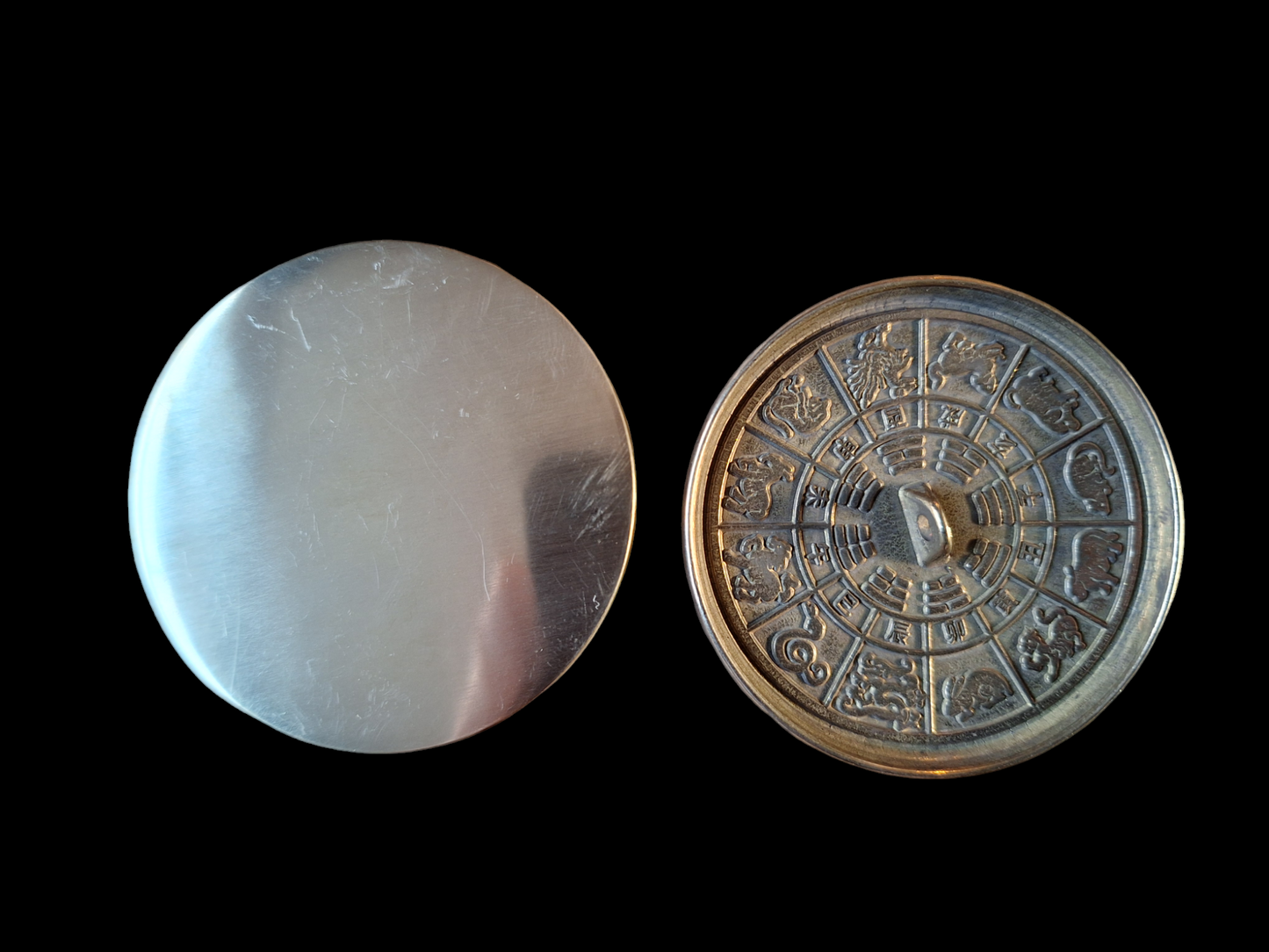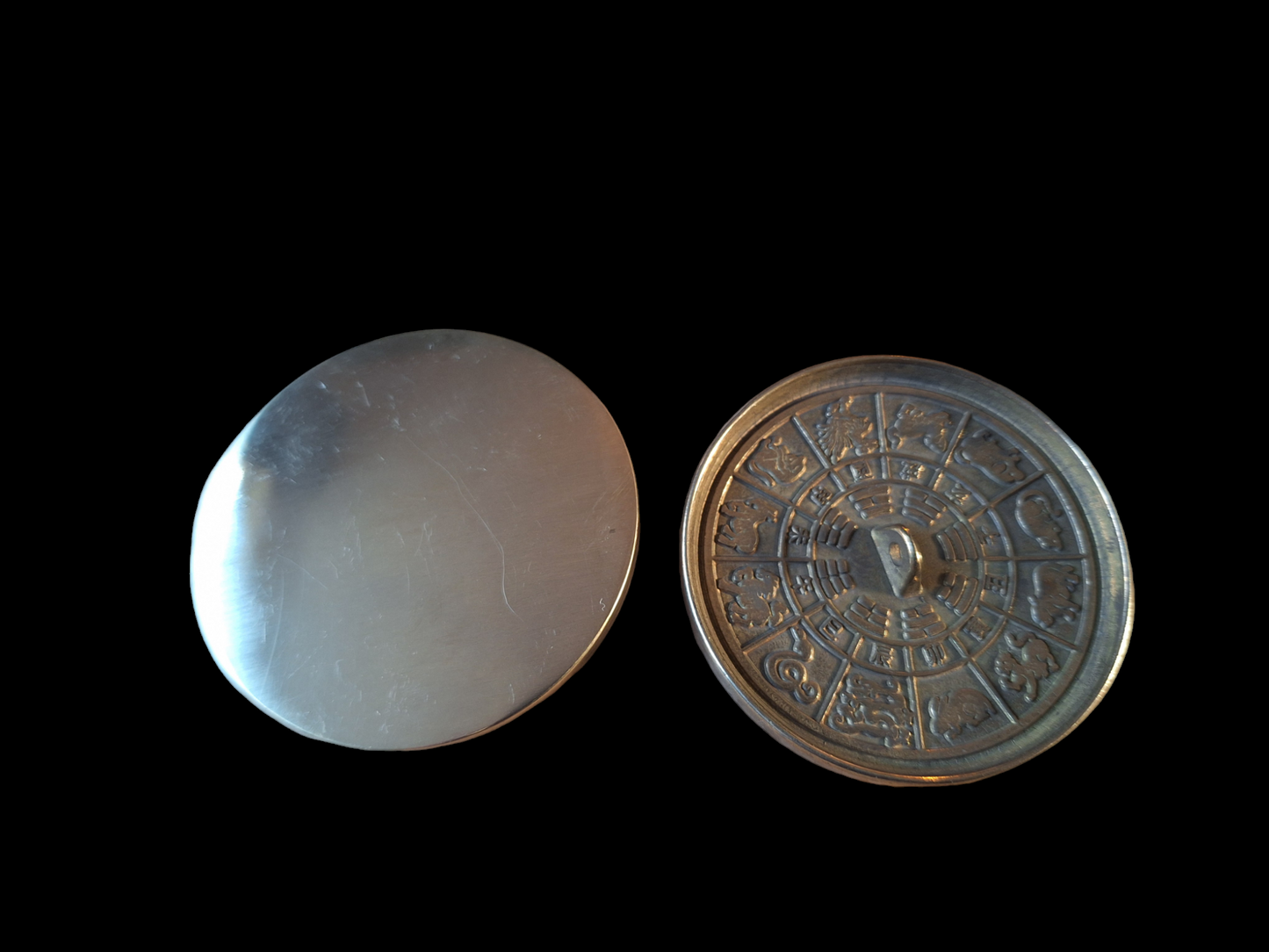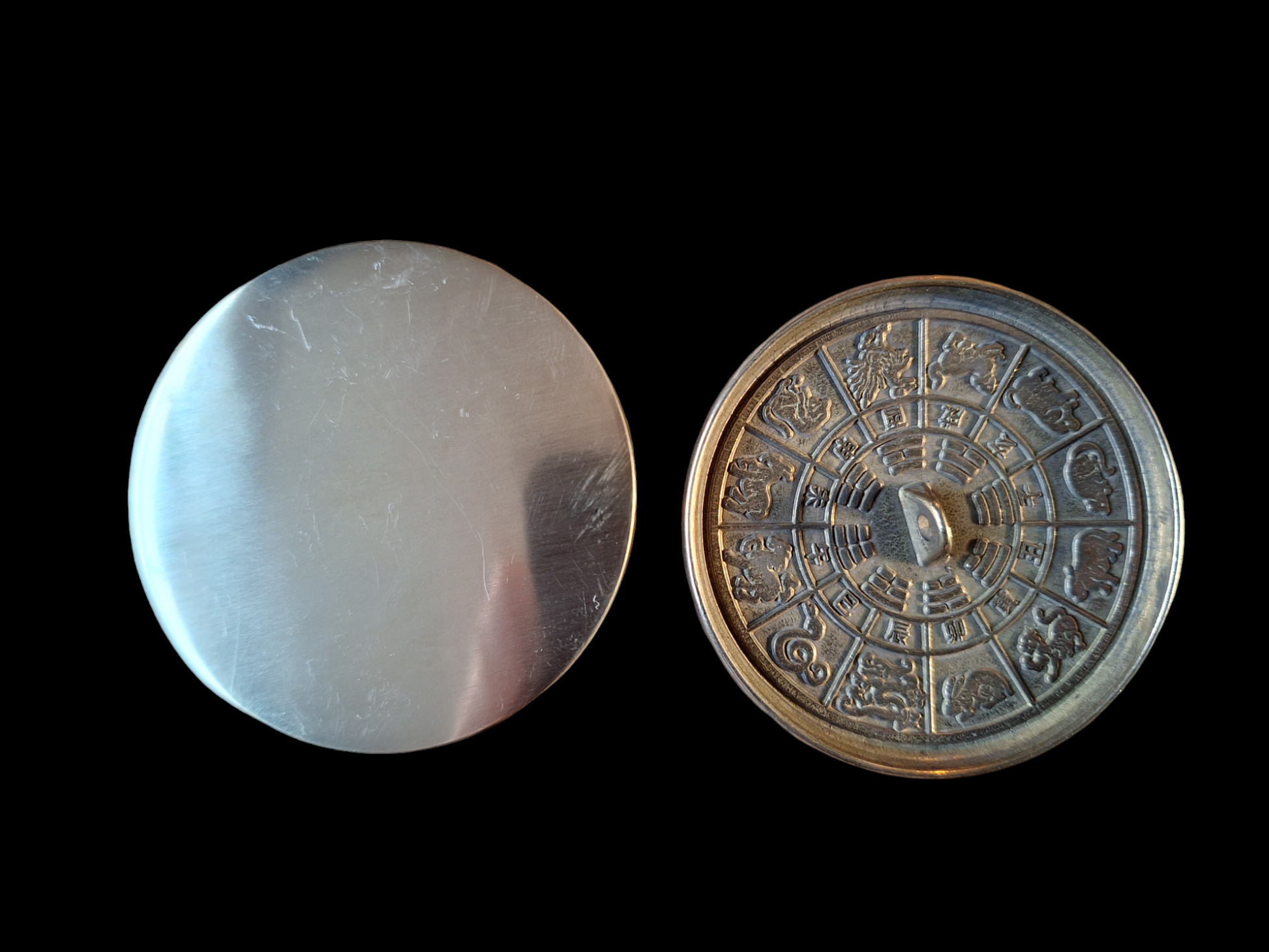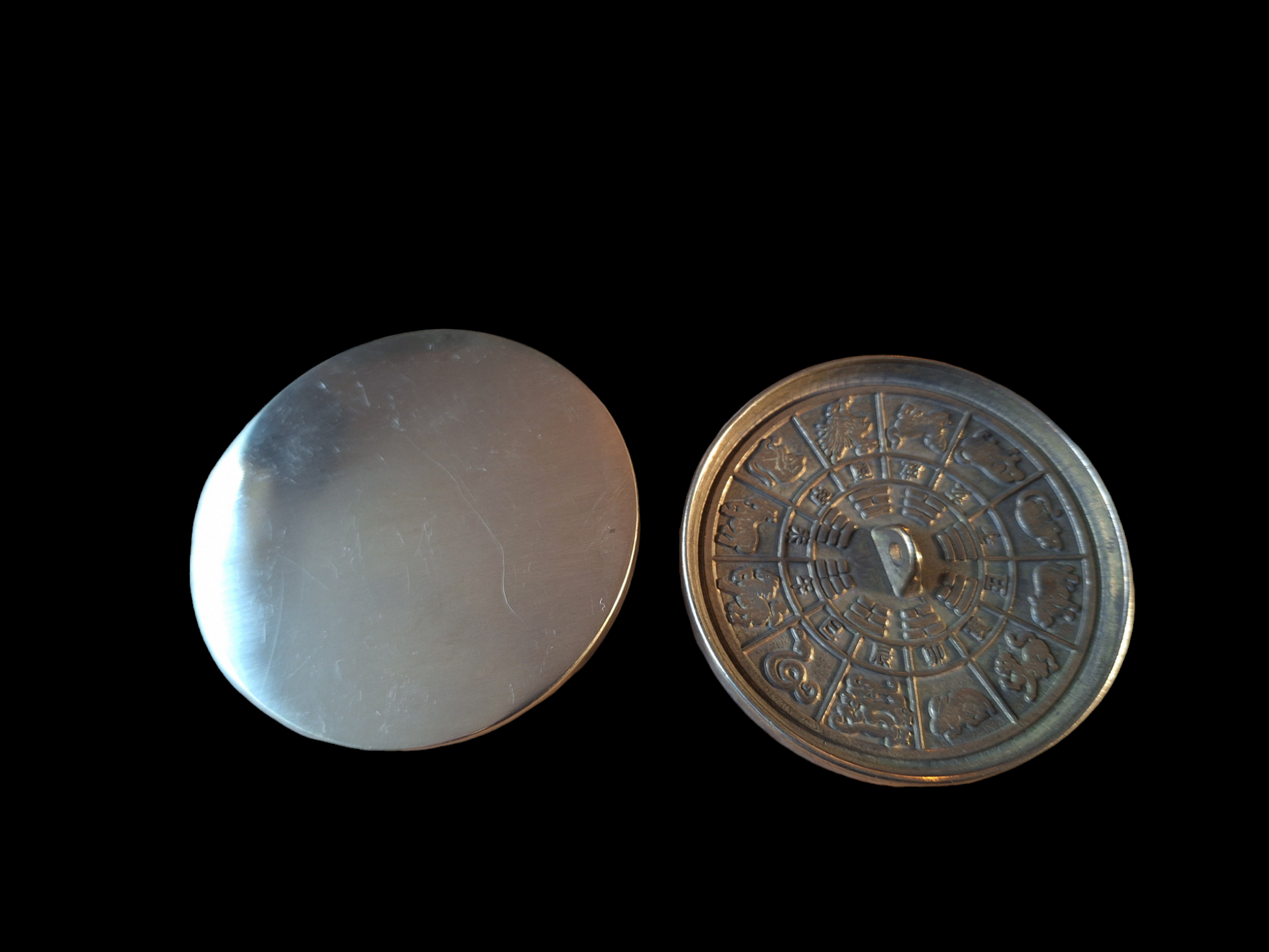Seawolf Shop
Mongolian shamanic mirror Trigrams and Zodiac 58 millimeters
Mongolian shamanic mirror Trigrams and Zodiac 58 millimeters
Couldn't load pickup availability
Share
Recently made brass mirror from Mongolia, with a diameter of 58 millimeters. This mirror comes to us via our friends at Shaman Bazar
Design characteristics:
The backside of this mirror shows a motive that became widespread during the Chinese Song Dynasty (960-1279): a Bagua and a 12-year cycle. This motive is nowadays still one of the most popular in China, protecting against evil and bringing harmony to life.
In the center the 8 trigrams ('Ba Gua') of Par Ha Ge can be seen. The trigram symbols come from very ancient origin; they derive from symbols found on ancient Chinese divination bones dating back as long as 11th century BCE. A related version of bone oracle is still used today by Turkic and Mongolian people, and also in the lineage of Spirit of Wolf Shamanism; 'Khaziki'.
Doubled trigrams form 64 hexagrams, which form the core of the I Ching, the Book of Changes.
Each trigram is a divinatory grapheme and represents different dynamics, energies, cardinal points, animals, seasons etc. In depictions such as on these mirrors, where the 8 of them together form a circle, it symbolizes heavenly order, a healthy balance and right flow of energy.
In the outer ring, divided into sections, the 12 animals of the eastern zodiac can be seen. Just like the circular arrangement of the trigrams, also this motive adds to the idea of heavenly order. But also its presence, when used on shamanic mirrors, symbolizes control over time and space, an important core principle in the practice of shamanism.
Read more about the origin, design and usage of (shamanic) mirrors in the general description of our webshop collection "Mirrors and Melongs".



